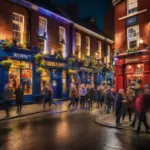Have you ever gazed upon the majestic ruins of Chichen Itza or Tikal and wondered, “How on earth did the Maya people travel between these distant cities?” It’s a question that has intrigued historians, archaeologists, and travelers for centuries. The Maya civilization, known for its advanced knowledge of astronomy, mathematics, and art, also possessed a surprisingly sophisticated understanding of transportation and infrastructure.
While they lacked the wheel and domesticated animals like horses, the Maya people were far from stationary. They navigated their world using a combination of ingenuity, resourcefulness, and a deep understanding of their environment. Let’s embark on a journey through time to discover the fascinating ways the Maya traveled.
Navigating the Waterways: Canoes and the Power of Trade
Rivers Were the Highways of the Maya World
Imagine gliding along a tranquil river, surrounded by the lush greenery of the rainforest. That was a common experience for the Maya. For them, rivers weren’t just sources of water, they were vital transportation routes. The Maya crafted impressive canoes from hollowed-out tree trunks, some large enough to carry considerable cargo and passengers. These canoes, powered by paddles and sometimes sails, connected cities, facilitated trade, and even played roles in religious ceremonies.
Did you know? Evidence suggests the Maya even traveled by sea, reaching distant coastal regions for trade and cultural exchange.
What Did the Maya Trade?
The Maya were active traders, and their extensive trade networks are a testament to their travel capabilities. They transported valuable goods like obsidian, jade, salt, feathers, cacao beans, and pottery. Imagine the bustling marketplaces, filled with exotic goods from far-off lands, all made possible by the Maya’s skill in navigating waterways.
Walking the Sacbeob: The Maya Road System
While canoes were perfect for water travel, the Maya also developed an impressive network of roads known as “sacbeob” (singular: sacbe). These raised roads, often paved with limestone and plastered smooth, connected important cities and ceremonial centers.
Walking for Trade, Pilgrimage, and More
Walking these sacbeob wasn’t just about practicality, it was also a symbolic act. Pilgrims might traverse these roads to reach sacred sites, while messengers carrying important information could rely on the sacbeob to deliver news quickly.
Expert Insight: “The sacbeob are a testament to the Maya’s engineering prowess and their ability to organize large-scale labor,” notes Dr. Isabella Ramirez, author of “Roads of the Maya: Connecting a Civilization.”
Travel and Spirituality: A Deep Connection
For the Maya, travel wasn’t just physical; it had a profound spiritual dimension.
Pilgrimage: Journeying to Sacred Sites
Imagine embarking on a pilgrimage to Chichen Itza during the spring equinox, when the shadow of the serpent god Kukulkan descends the pyramid. Such journeys were deeply significant, allowing the Maya to connect with their deities and ancestors.
Travel and Feng Shui: Aligning with Nature
The Maya were deeply attuned to nature, and this is reflected in their approach to travel. The placement of cities, temples, and even roads often aligned with astronomical events and natural features. This alignment with the natural world was crucial for maintaining balance and harmony, echoing principles found in Feng Shui.
